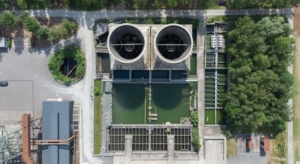Admin
November 7, 2023
How smart sewers can stop disgusting UK sewage spills

*As published on Smart Water Magazine

It’s a problem most infamous in struggling underdeveloped countries, but the sad reality is that vast amounts of raw sewage are dumped in rivers and seas as part of everyday business in England.
Both the number and frequency of untreated sewage dumps is shocking: Last year water and sewerage companies reported 301,091 spills into local waterways. That works out to 820 sewage dumps per day.
The average raw sewage overflow lasted 5.8 hours. Companies self-reported a total of more than 1.7 million hours of raw sewage pollution flows. Remember there are only 8,760 hours in a year. The number of simultaneous sewage dumps from multiple locations is truly staggering.
English pollution has become an international embarrassment. This summer 57 athletes at the Triathlon Championship Series in Sunderland turned sick after swimming in polluted waters of Roker Beach. Officials had found e.coli bacteria pollution at levels 39 times higher than a month earlier.
Chances are, as you are reading this, sewage laden with human waste, industrial chemicals, and heavy metals is flowing into the environment somewhere in England.
How did we get into such a mess?
The truth is, England spills so much sewage by design. For too long, standard civil engineering practice was to build underground wastewater systems that allowed clean rainwater to mix during rainstorms with dirty sewage, and then overflow together into rivers and the ocean.
England now has about 15,000 storm overflows, with at least 1,200 spewing out near a designated bathing water, the Environment Agency reports.
That obsolete engineering reduces flooding on land and backups into homes, but merely shifts the contamination into our waters. As an Environment Agency report concluded in September, “Storm overflows were originally designed and intended to only operate in unusually heavy rainfall events. However, they are being used significantly beyond their original purpose.”
The problem has become worse as climate change intensifies rainfall and development creates more tarmac and other impermeable surfaces that promote fast storm runoff. In London alone, 39m tonnes per year flows into the Thames, much of it during the current autumn rainy season.
In Europe, only Poland and Belgium report a higher proportion of combined sewers. With a network of 440,000 km, the troubled UK combined sewer network is nearly double the size of Europe’s next largest system, in Italy.
It’s time for England to embrace a modern reality where wastewater quality is as important as wastewater quantity – and where pollution is identified and dealt with before it’s released into the environment, not after
The good news is that England has started to face the problem. England plans to spend £60bn for an 80 percent reduction in combined sewer overflows in the next 30 years. Most of that money will design and build storage facilities at high-risk sites, with the biggest single project, the London Tideway 25 km Super Sewer, aimed at cleaning the Thames for a price of £4.5bn.
Major construction projects are important, but just as crucial is the way they will be regulated when they are up and running.
Traditionally storm sewers have been operated based on the quantity of liquid flowing. The premise is Old School – that the solution to pollution is dilution.
However, modern life is rendering that philosophy obsolete and even hazardous. Many industrial chemicals are harmful to the environment – and the people who rely on it – in small doses.
As a result, we see repeated health advisories about fish consumption. High levels of mercury are found in king mackerel, marlin, swordfish, ahi tuna, and bigeye tuna, and PCBs, despite being banned decades ago, continue to taint fish and shellfish in our markets. Combined sewer overflows too often force swimmers, vacationers, anglers, and surfers out of the water for health and safety reasons.
The stark truth is that it’s rare for regulators to test combined sewage overflows as they are discharged into English waters, even though the untreated sewage carries all the waste you’d expect from a flushed toilet, as well as industrial pollutants such as microplastics, PFAS forever chemicals, toxic heavy metals, lawn and farm fertilizers, and even COVID virus loads.
It’s time for England to embrace a modern reality where wastewater quality is as important as wastewater quantity – and where pollution is identified and dealt with before it’s released into the environment, not after.
Snart sewer systems, which offer real-time monitoring, modeling, data processing, and AI analytics, are becoming the norm in the US, Israel, South Korea, Australia, and Spain, among others. They should become the norm in England, too.
The more we learn about the world, the more we realize that we live in a closed loop for natural resources – what we spill into our rivers and seas today becomes the water and food that we consume tomorrow.
Taking on combined sewer overflows is the right thing to do. What’s important now is for us to fix it the right way.
Your wastewater contains the data.
We just need to extract it so that you can optimize your operations.
Contact us and a member of our team will get back to you as soon as possible.



